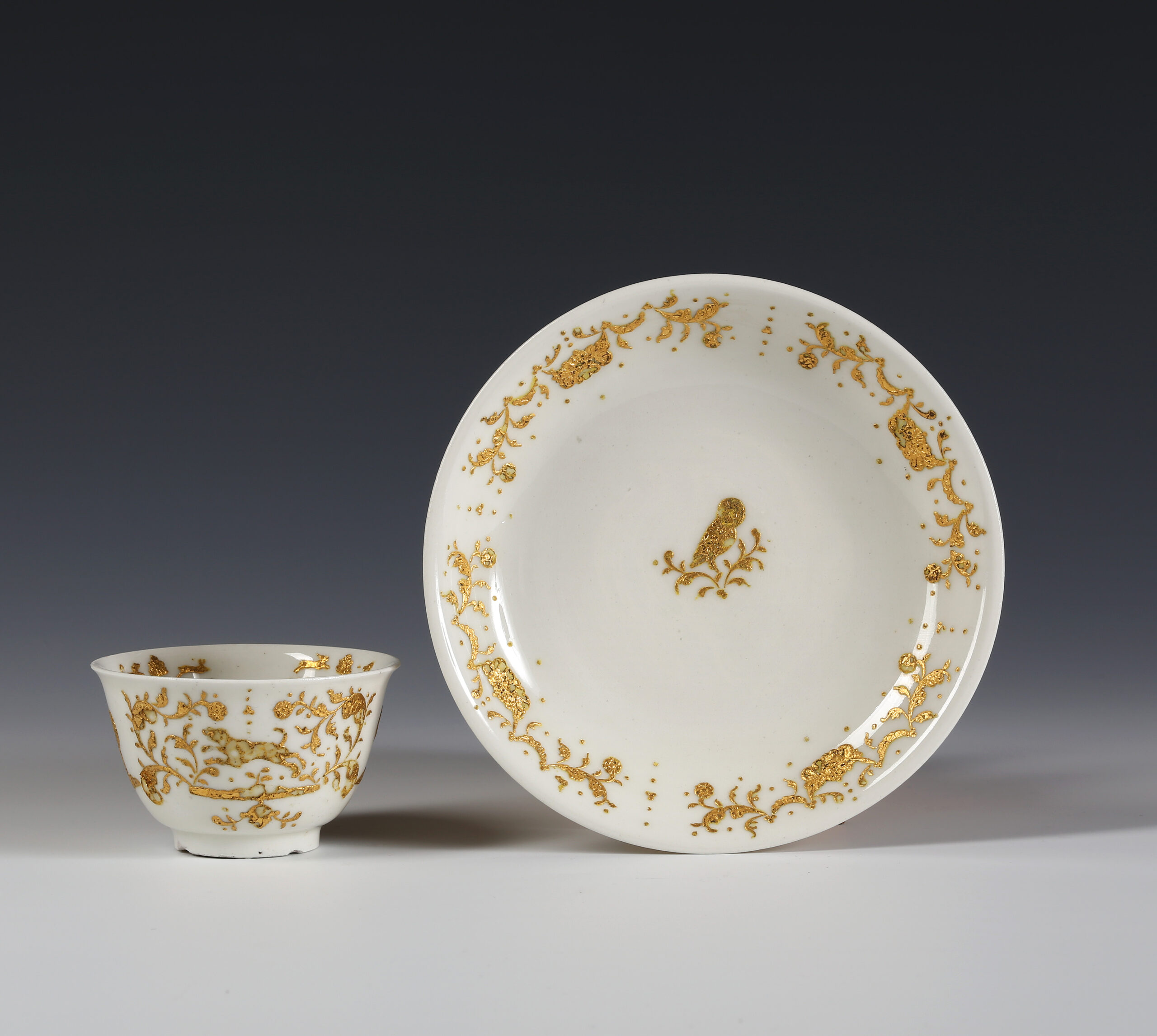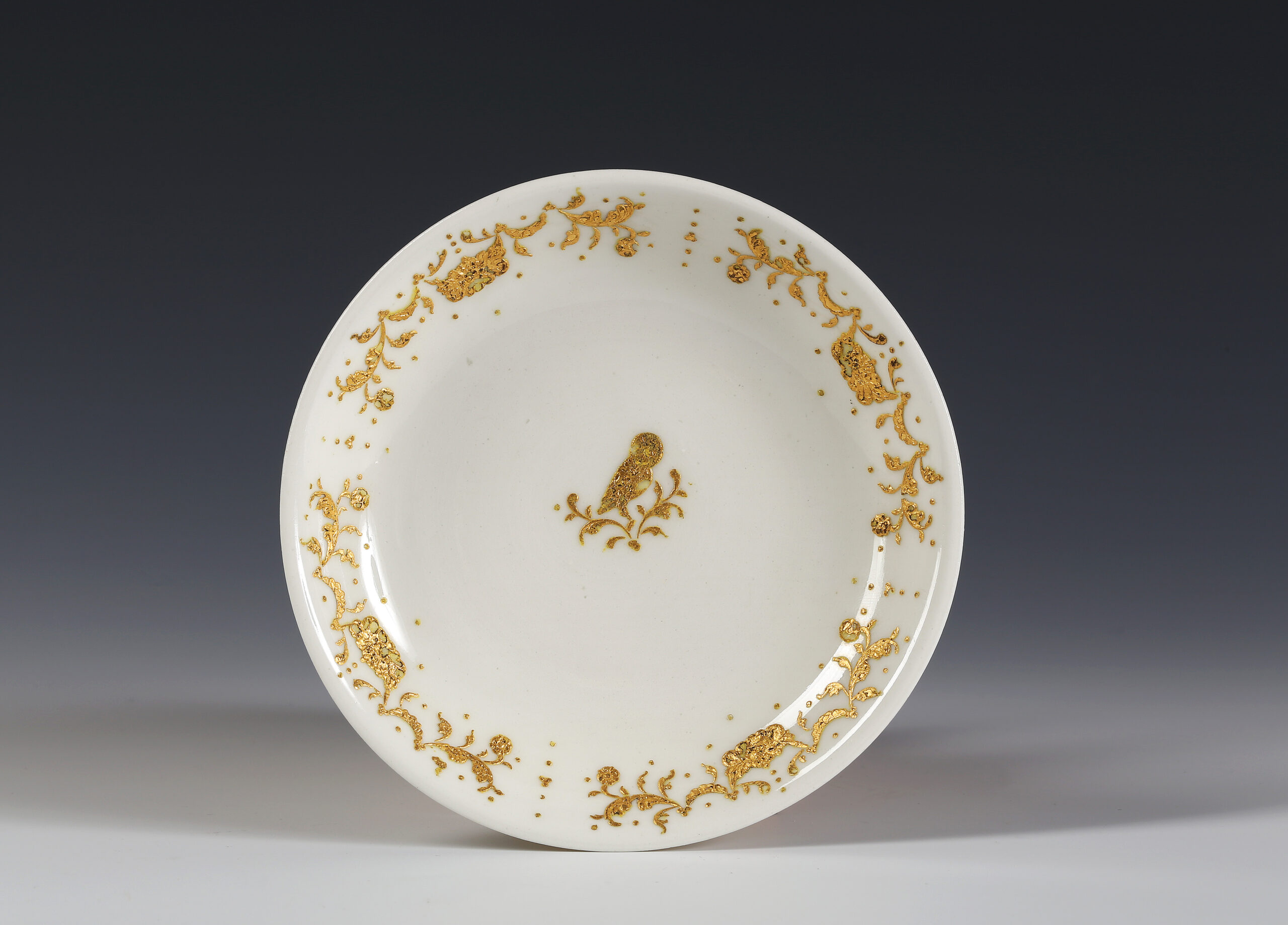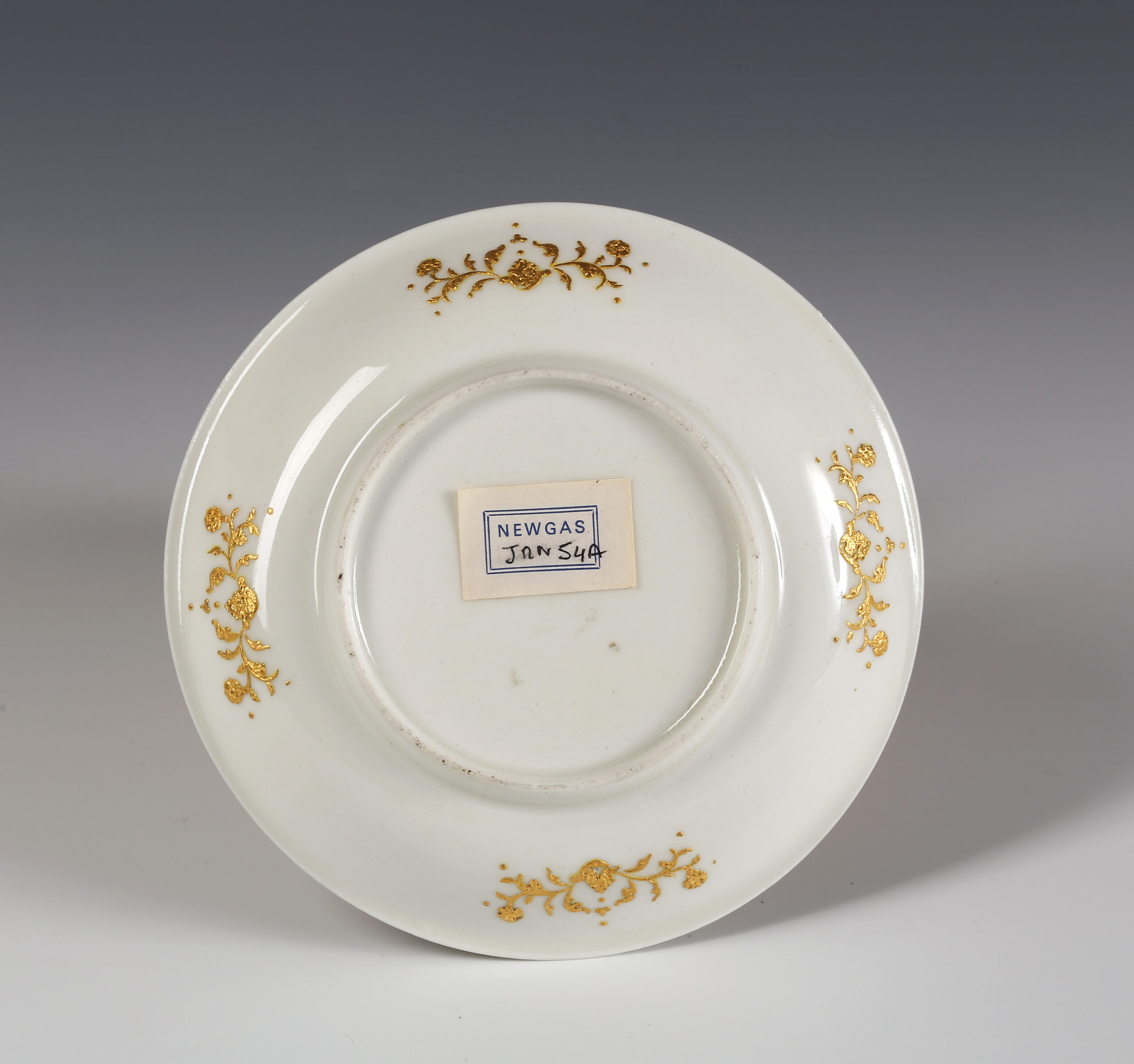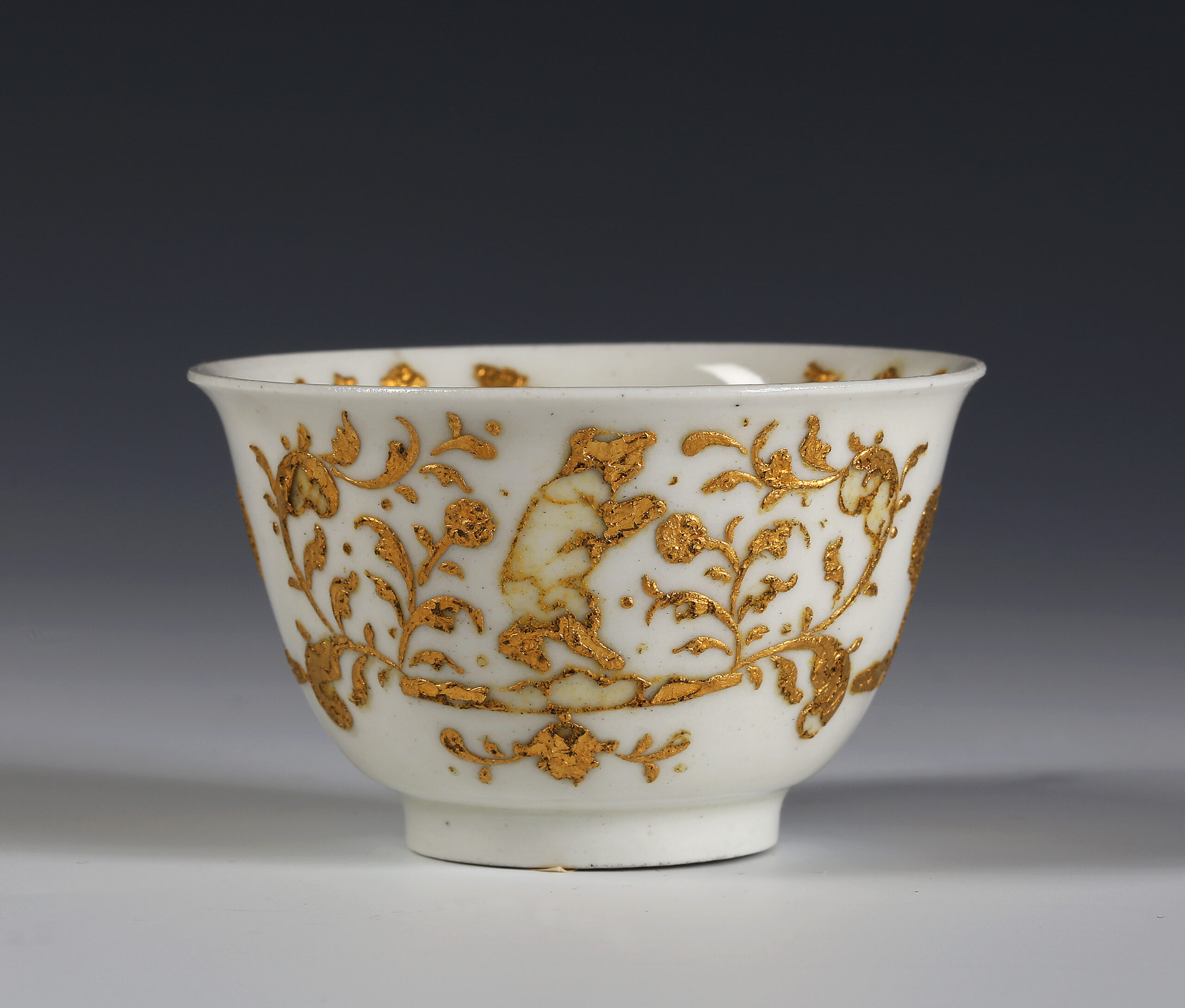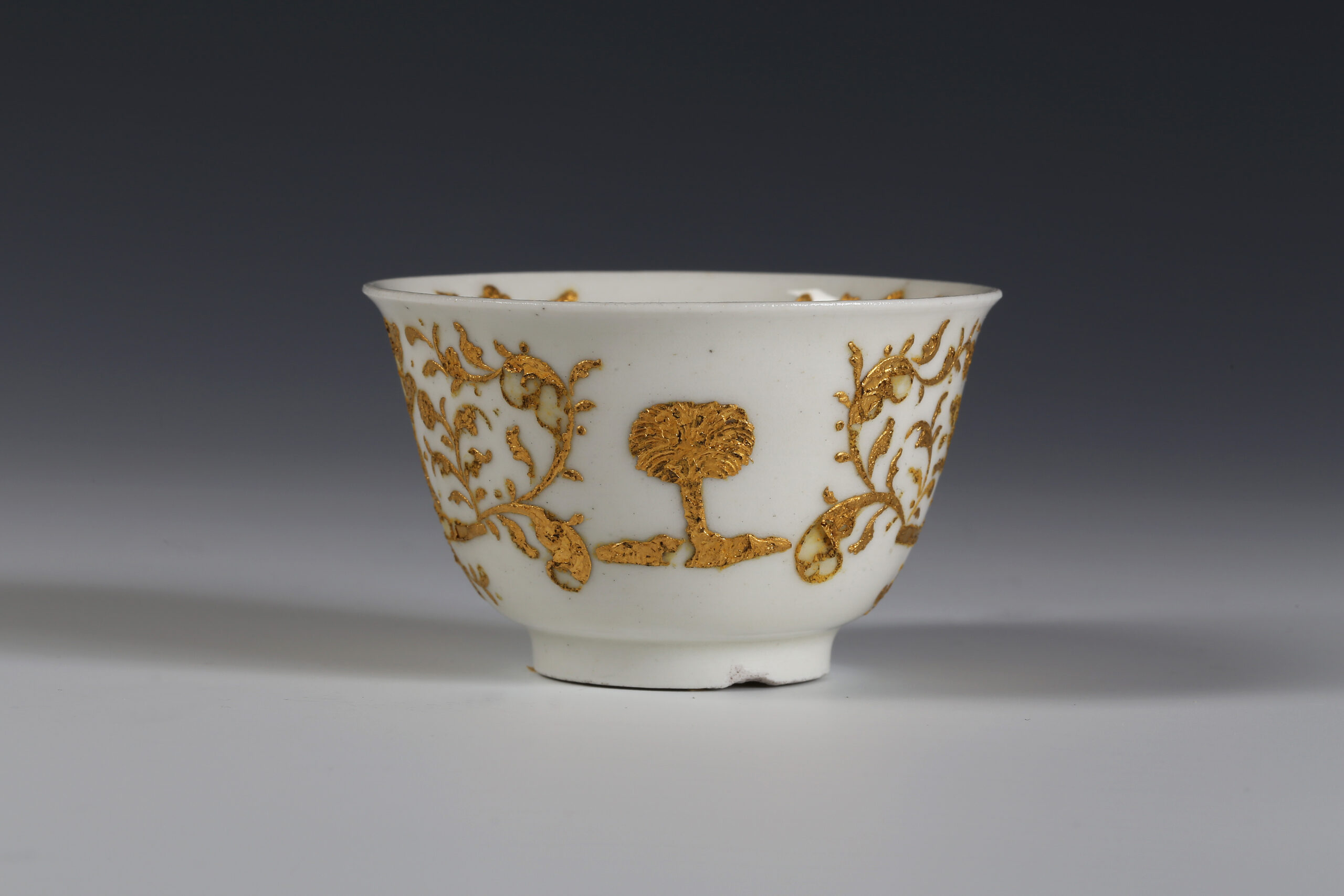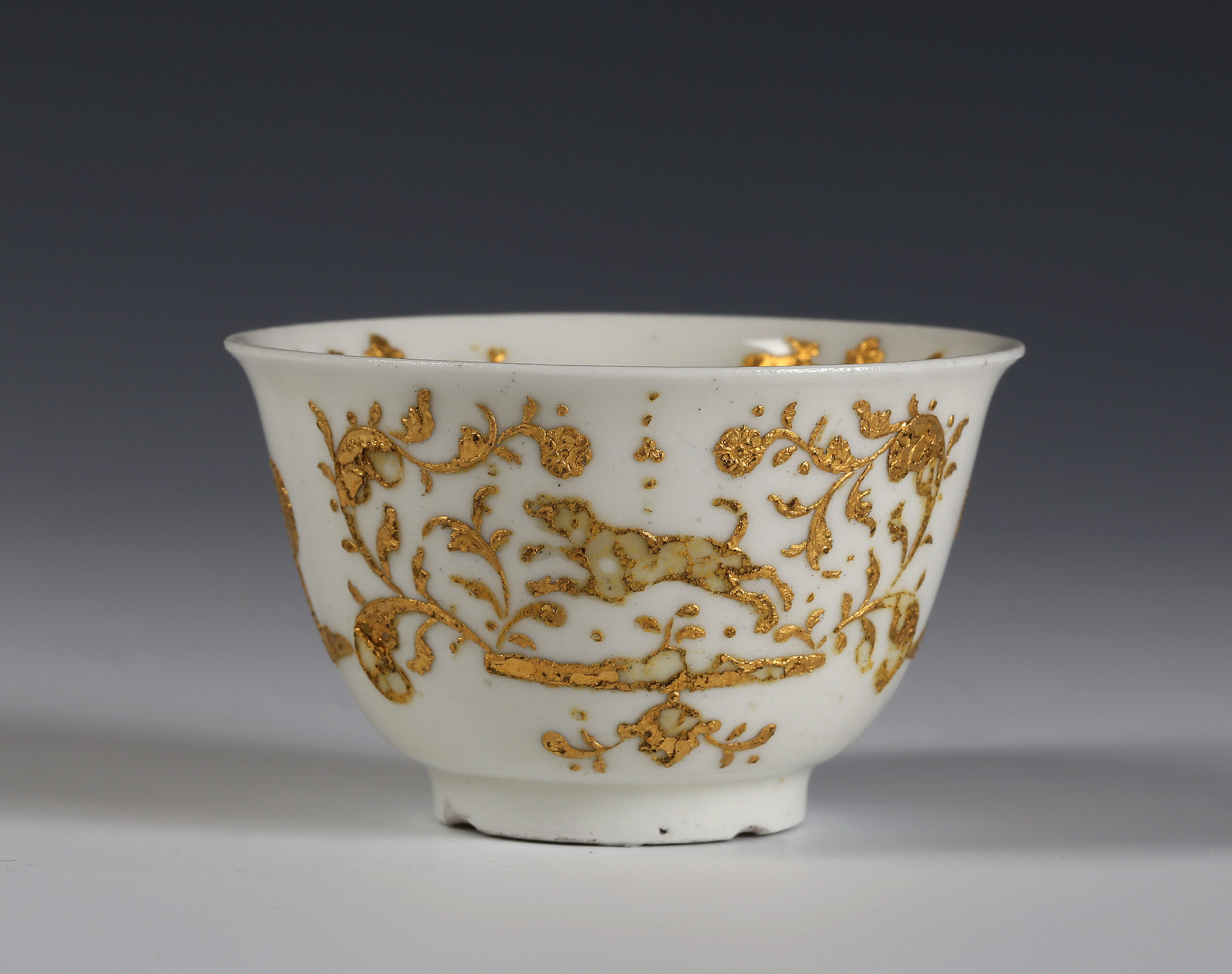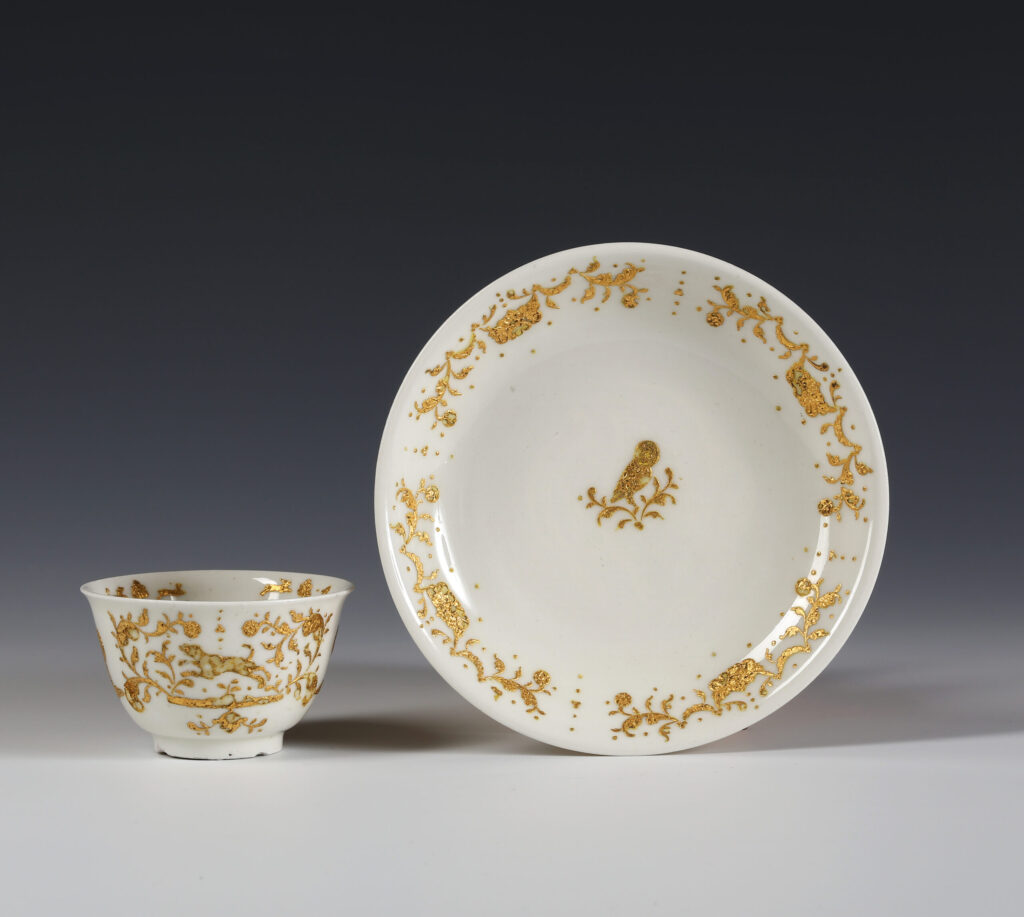
The saucer decorated with an owl and four bands of ornament with further sprays on the reverse. The teabowl with a dog and bear on the outside, and animals in chase on the inside of the rim.
This distinctive decoration only occurs on early Meissen, Böttger porcelain, and Saxon glass. The repeating elements show that it is a die-stamped or paillon technique. The foil appears thinner than on the French die-stamped decoration and has a rather crumbly texture; there are problems with the adhesion over the yellow brown flux. There are dots similar to those on the piquée d’or group which were presumably applied with gold in powder form but they usually have a small dimple in the centre, probably caused as the substance in which the gold is suspended evaporates.
This type of decoration has often been wrongly attributed to the arcanist and decorator Christoph Conrad Hunger but there is no basis for this. Although we can be sure that it was done in Saxony, it can be shown that Hunger was definitely not responsible because exactly the same decoration occurs on glass including an example in the British Museum [1886,1113.1] decorated with the cypher of Frederick Augustus III which must postdate his accession to the electorate of Saxony in 1733 and Hunger is known to have left Dresden by 1729. [for a further discussion of this see Manners 2011, pp. 35 – 40]
Condition:
Significant losses to gilding
Provenance:
Acquired Christie’s 30 June 1986, lot 97
Private Collection, London
References:
Manners 2011
Errol Manners, ‘Gold-decoration on French, German and Oriental Porcelain in the early eighteenth century’, Journal of the French Porcelain Society vol. IV, (2011)
Literature:
Manners 2024
E & H Manners, ‘Decorators of Ceramics and Glass, 2024, no. 36
Price: £3,500.00


